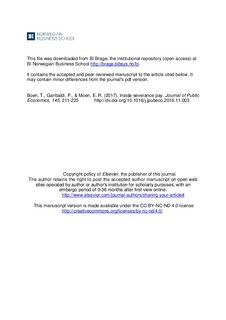Inside severance pay
Journal article, Peer reviewed
Date
2017Metadata
Show full item recordCollections
- Scientific articles [2173]
Original version
Journal of Public Economics, 145(2017), 211-225 http://dx.doi.org/10.1016/j.jpubeco.2016.11.003Abstract
All OECD countries have either legally mandated severance pay or compensations imposed by industry-level bargaining in case of employer initiated job separations. The paper shows that mandatory severance is optimal in presence of wage deferrals induced by workers' moral hazard. We also establish a link between optimal severance and efficiency of the legal system and characterize the effects of shifting the burden of proof from the employer to the worker. Quantitatively, the welfare effects of suboptimal severance payments vary in general equilibrium between 1 and 3 %. The model accounts also for two neglected features of the legislation. The first is the discretion of judges in declaring the nature, economic vs. disciplinary, of the layoff. The second feature regards the relationship between severance and tenure. Our theory gives necessary conditions under which optimal severance is increasing with tenure, as generally observed.
Description
The accepted and peer reviewed manuscript to the article
